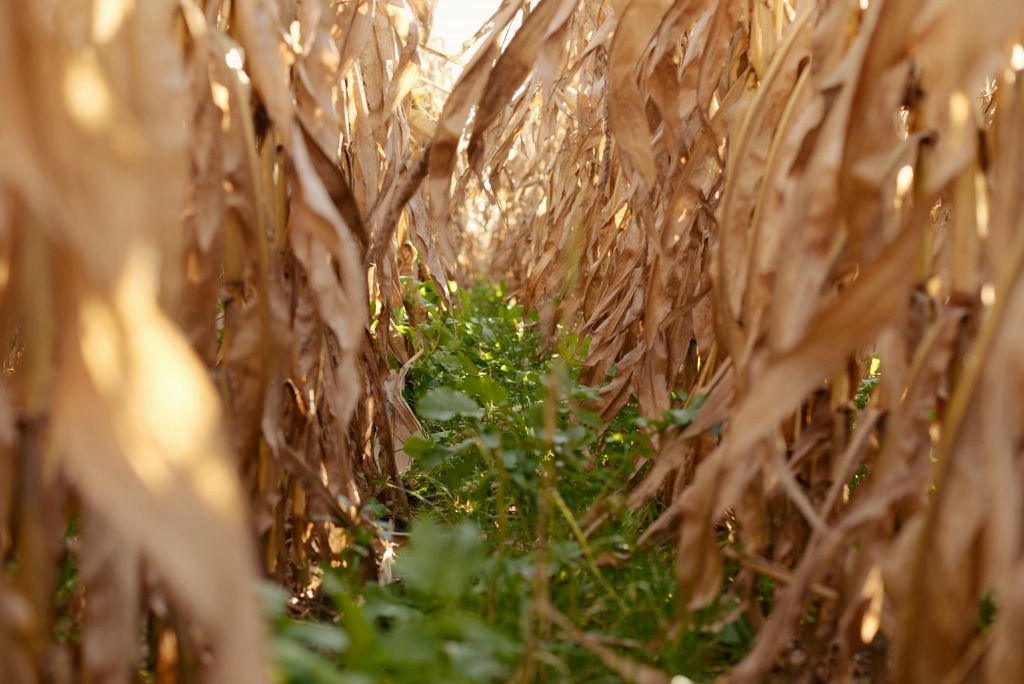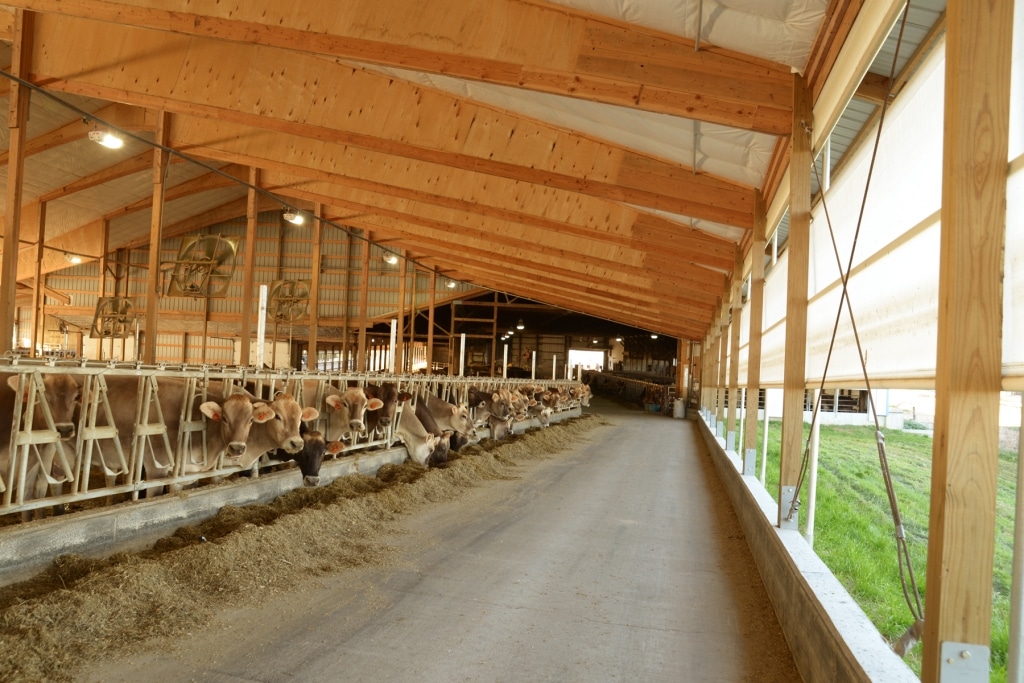Goals
- Improve and Protect Ground and Surface Water Quality
- Reduce the risk and impact of flooding to social, economic and ecological systems
- Build Human and Landscape Resiliency
Objectives, Strategies, and Actions
Objectives, Strategies, and Actions were adopted by the Upper Wapsipinicon River Watershed WMA Board to help them reach their goals and achieve their vision. They were adopted with appreciation and consideration for the community engagement and input provided by watershed residents and partners; consideration for the watershed characteristics as described in the About the Watershed section of this plan; recognition of the unique Challenges and Opportunities of the Upper Wapsipinicon River Watershed; consideration and appreciation for the Analysis, Research and Modeling conducted by many partners.
- There are six Objectives. Each of the Objectives and the associated Strategy or Strategies are listed below. Four “Story Maps” provide additional information about each Objective and the related Strategies and Actions.
- There are one or more Strategies for each Objective
- Strategies collectively help reach Objectives.
- There are multiple Actions for each Strategy. Actions are the most specific and personal recommendation of the UWR WMA Board.
- Actions that are implemented will help achieve Strategies.
Objective 1: Communicate, promote and advance the mission and goals of the Watershed Authority by creating an Upper Wapsipinicon River Watershed Resiliency Network. The network should foster partnerships between agencies, political entities and sub-entities, and organizations, consider all aspects of flood prevention and recovery, and maximize local, state and federal resources.
Strategy 1: Foster exceptional multi-agency/organization communication to build partnerships and engagement that will result in information sharing, and long-term commitment and sustainability beyond planning through implementation
Strategy 2: Foster implementation of this plan through expanded technical assistance through local, state and federal partner agencies and organizations.
Objective 2: Implement a Comprehensive Program of targeted activities designed to reduce flood risk and improve water quality in the Upper Wapsipinicon River Watershed.
Strategy 1: INCREASE INFILTRATION: Implement on-site practices that enhance soil health, reduce runoff and increase water holding capacity across the watershed. (NRCS four principles) These practices will minimize disturbance, maximize the presence of living roots. maximize soil cover and maximize biodiversity.
Strategy 2: IMPLEMENT WATER QUALITY IMPROVEMENT PRACTICES.
Strategy 3: STORE EXCESS RAINFALL RUNOFF: Reduce Upper Wapsipinicon River stage by 12 inches at the City of Independence river gauge during a 2008 size rain event.
Strategy 4: RESTORE AND PROTECT STREAM AND RIVER CORRIDORS AND FLOODPLAINS.
Click on the strategy tabs below to explore actions associated with each strategy.
Strategy 1: INCREASE INFILTRATION: Implement on-site practices that enhance soil health, reduce runoff and increase water holding capacity across the watershed. (NRCS four principles) These practices will minimize disturbance, maximize presence of living roots. maximize soil cover and maximize biodiversity
Practices/Actions
Action 1: Implement Cover Crops
Cover crops are planted between cash crop seasons in order to keep cover on the ground all year long. They provide vegetative cover during the dormant winter months and are harvested or terminated in the spring so the next crop can grow. Using cover crops along with a no-till management strategy improves soil organic matter, improving soil health and overall productivity.
Action 2: Practice No-till
Performing no full tillage from the time of harvest or termination of one cash crop to the time of harvest or termination of the next cash crop, regardless of the depth of tillage.
Acton 3: Strip-till or Reduced Tillage
Strip-tillage is a form of reduced tillage in which strips of soil are tilled ahead of planing using a knife apparatus.
Action 4: Multi-cropping or Regenerative Agriculture
Multi-cropping is a form of regenerative agriculture which includes relay-cropping, poly-cropping, double-cropping, or inter-cropping. More generally, multi-cropping is a practice of growing more than one crop in the same growing season on the same section of land. Multi-cropping adds diversity to crop rotations, creates additional economic opportunities, reduces input costs and weed pressure, mimics nature, builds soil health, and more.
Action 5: Implement CRP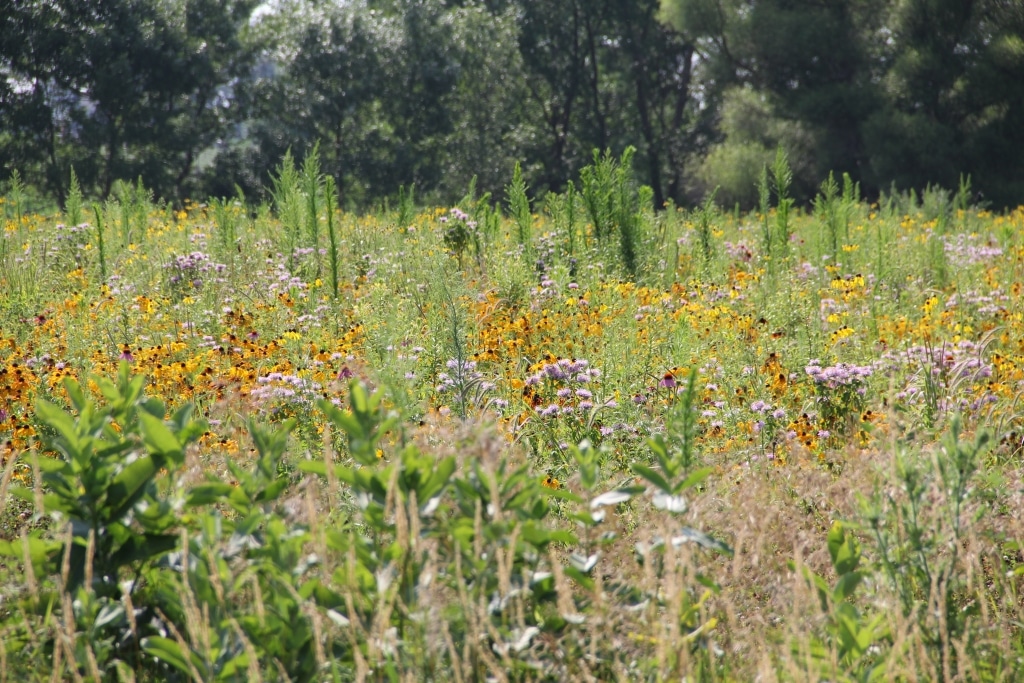
Establishing and maintaining the permanent vegetative cover of native grasses, legumes, and forbs.
Action 6: Implement Tree and Shrub establishment
Establishing and maintaining permanent vegetation in the form of woody plants in non-forested areas.
Actions 5 and 6 provide year-round ground cover and living roots, plant diversity, and require no soil disturbance. These practices should be managed regularly through timber stand improvement and mid-contract management.
Action 7: Install Contour Buffer Strips
Contour buffer strips are strips of grass or a mixture of grasses and legumes that run with the contour of the crop field.
Action 8: Install Prairie Strips
Similar to Contour buffer strips, prairie strips are strips of native grasses, legumes, and forbs that run with the contour of a crop field. They alternate down the slope of a field with wider cropped strips.
Action 9: Install Grass Waterways
Grass waterways are constructed channels that are planted to grass or other suitable permanent vegetation to convey water to a stable outlet from a crop field.
Actions 7-9 provide areas within a crop field that capture water and sediment runoff, contain high biodiversity, and provide ground cover and living roots all year round.
Action 10: Practice Contour farming
Contour farming means to farm with row patterns perpendicular with the slope of a hill, not up and down the slope. Creates little dams that work to slow runoff and reduce erosion.
Action 11: Practice Strip cropping
Strip cropping is growing one cultivated crop (like corn) in strips alternating with a sod-forming crop (like hay) arranged to follow the contour of a field.
Action 12: Plant diverse crop rotations
Conservation crop rotation is growing different crops on the same piece of land year after year.
Actions 10-12 are crop management practices that help limit soil erosion.
Action 13: Practice Rotational Grazing
A grazing practice that moves cattle between smaller paddocks based on forage availability and nutritional needs. Rotational grazing maintains diverse plant foraging composition, leaves more living roots and above-ground vegetation, and minimizes high traffic area disturbances.
Urban land use can result in increased surface runoff from impervious surfaces, like houses, businesses, schools, roads, driveways and parking lots. Urban transportation structures like roads and bridges can disrupt the natural flow patterns of water and can result in increased runoff from impervious cover. Practices used to increase the amount of permeable surfaces within an urban landscape are listed below. Click the practice to learn more about each one.
Action 14: Plant Native Landscaping
Establishing and maintaining a permanent vegetative cover of native grasses, legumes, and forbs in the urban setting to improve infiltration and provide habitat for wildlife.
Action 15: Implement Tree and Shrub establishment
Establishing and maintaining permanent vegetation in the form of woody plants in not forested areas.
Action 16: Install Permeable Pavement
Permeable pavement allows water to infiltrate around or through the paved surface into an engineered layer of rock below. Types of permeable pavement include; permeable pavers, pervious concrete or asphalt, and articulated pavers.
Action 17: Install Bioswales
Bioswales are installed as an alternative to a storm sewer; they consist of native vegetation, permeable soil, perforated subdrain, and berms. They are installed on sloped areas and are conveyed into wetlands pr detention basins before draining into a nearby stream or waterbody.
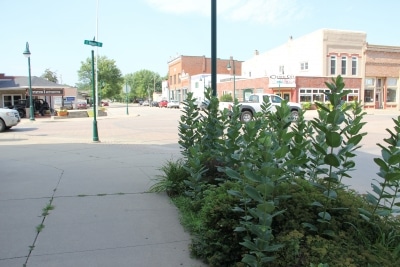 Action 18: Install Bioretention Cells
Action 18: Install Bioretention Cells
Bioretention cells are landscaped depressions that capture and infiltrate runoff water from impermeable surfaces such as parking lots or streets.
Action 19: Plant Rain Gardens
Rain gardens are shallow, bowl-like gardens that capture water from driveways, roofs or yards. Runoff that is captured in a rain garden creates a small temporary pond.
Actions 14-19 work to capture and infiltrate runoff from impermeable surfaces. They help reduce flows and filter out pollutants associated with urban areas.
Measuring Success
100% cover by one or more of the soil health or perennial cover practices on ‘Critical’ and ‘Very High’ Runoff Risk parcels as shown by the ACPF Data on the Upper Wapsipinicon Subwatersheds page.
60% cover on parcels deemed as ‘high’
40% cover by one or more of the soil health or perennial cover practices on remaining acres.
| Critical Acres | Very High Risk Acres | High Risk Acres | Present Risk Acres | |
| Total Acres | 17,845 | 63,281 | 265,291 | 666,360 |
| Implementation Goal Acres | 17,845 | 63,281 | 159,174 | 266,544 |
Strategy 2: IMPLEMENT WATER QUALITY IMPROVEMENT PRACTICES
The Upper Wapsi River watershed contains approximately 100 miles of impaired streams listed in 2016. Water quality is very important for the overall resiliency of the watershed. Increasing soil health and soil infiltration as explained in the previous strategy also improves water quality. Click on the practices listed below to learn more about urban and rural best management practices that improve water quality and protect groundwater sources.
Practices/Actions
Action 1: Install Nutrient Reduction Wetlands
Nutrient Reduction Wetlands can be implemented in both rural and urban settings to collect and filter runoff before entering a major stream or river. Nutrient Reduction Wetlands are marshy areas that contain water-loving plants. They can contain standing water all year round or for only part of the year. They allow sediment and pollutants to be filtered before entering a stream, river, or groundwater sources.
Action 2: Practice Nutrient Management
Nutrient management is managing the amount, source, placement and timing of plant nutrients and soil amendments to reduce the amount of added nutrients that get washed into surface and groundwater supplies.
Action 3: Install Manure Storage Systems
Protects downstream surface and groundwater sources from manure runoff by storing it until conditions are optimal for field application.
Action 4: Install Bioreactors
Bioreactors are an edge of field structure that contain a carbon source that enhances denitrification of excess nitrogen from field tile drainage.
Action 5: Install Saturated Buffers
Saturated buffers are a riparian buffer in which subsurface drainage from tile is diverted allowing excess nutrients to filter before entering a drainage ditch or other body of water.
Action 6: Install Drainage Water Management System
Allows the height of the water table within a field to be controlled. It allows farmers to hold water in the root zone of plants when they need it most, and drain it when there is too much. Drainage Water Management helps reduce the amount of nutrients that escape through tile drainage.
Action 7: Practice Livestock Stream Exclusion
Livestock stream exclusion limits the time and area livestock spend in a stream or river, which decreases the amount of excess nutrients and bacteria that directly enter the stream.
Action 8: Practice Source Water Protection
According to the Iowa DNR Source water protection is defined as the, “act of preventing contaminants from entering public drinking water sources.”
To view potential best management practice locations in each Subwatershed in the Upper Wapsi River Watershed click Here.
Urban areas and residential communities also have a large connection with water quality and heavily rely on certain drinking water sources. Municipal infrastructure upgrades may be needed due to aging infrastructure, or an increase in wastewater and stormwater treatment volume. Poorly functioning septic tanks allow untreated wastewater into streams and rivers. Practices listed below work to make sure that urban wastewater and stormwater are carefully managed to reduce bypass directly into a stream or river, and mixing between the two systems.
Action 9: Practice Septic system management
Properly designed, sized and maintained wastewater treatment systems safely remove and treat wastewater from the home and protect pollutants from entering water sources nearby.
Action 10: Educate Watershed Residents
Education programs that teach about lawn fertilizer and pesticide application, waste dumping in sinkholes, streams and rivers, and picking up waste produced from pets are a couple are some ways community members can help protect their drinking water and recreational resources.
Measuring Success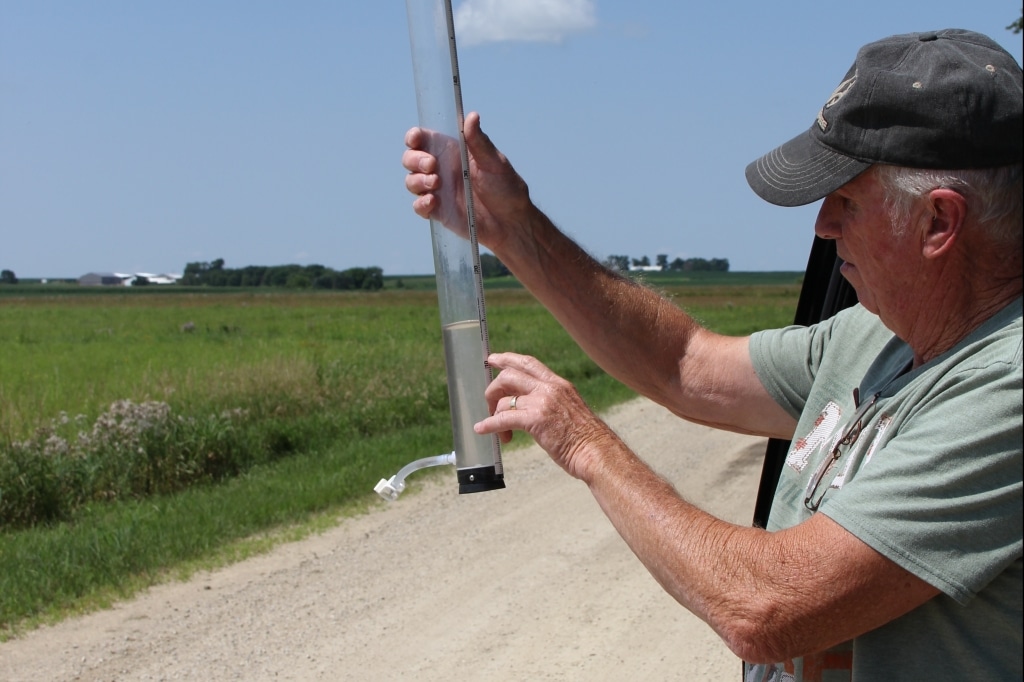
- Reduce Nitrates to below 6 mg/L in all surface and source waters.
- Reduce Total Phosphorous below 0.2 mg/L
- Meet standards for all designations/No impairments.
- Reduce turbidity/Increase visibility in surface water during rainfall events to no less than 10 cm.
- Continue stream monitoring.
- Encourage well testing and analyze test results by subwatershed
- Restore and maintain a viable population of smallmouth bass and northern pike along the entire Upper Wapsi River
- Completed phase 2 source water assessment for all communities in the Upper Wapsi River Watershed
Strategy 3: Reduce flood stage at Independence by 12 inches during a 2008 size storm.
According to the Iowa Flood Center, the number of heavy 3+ inch rainfalls are becoming more frequent (UWR Hydrologic Assessment). Water detention practices hold water in the landscape by capturing runoff from these heavy rainfall events before it enters a stream or river. These practices limit peak flows associated with flash floods. Water detention practices can be implemented in an urban or rural area, and many of them offer multiple benefits in addition to flood reduction.
Practices/Actions
Action 1: Install Detention Ponds
Detention ponds can be designed to hold water all year round, or for only a short period of time. Detention ponds that enough water all year round can be used
for recreational activities like fishing. Detention ponds provide additional storage for runoff water from neighboring fields or landscapes.
Action 2: Install Water and Sediment Control Basins (WASCOB)
WASCOB is an embankment structure that collects runoff water at the bottom of a drainage area and slowly releases it allowing sediments and nutrients to filter out.
Action 3: Create and Restore Wetlands
Wetlands provide areas where excess water can be stored and filtered before entering a nearby stream or river.
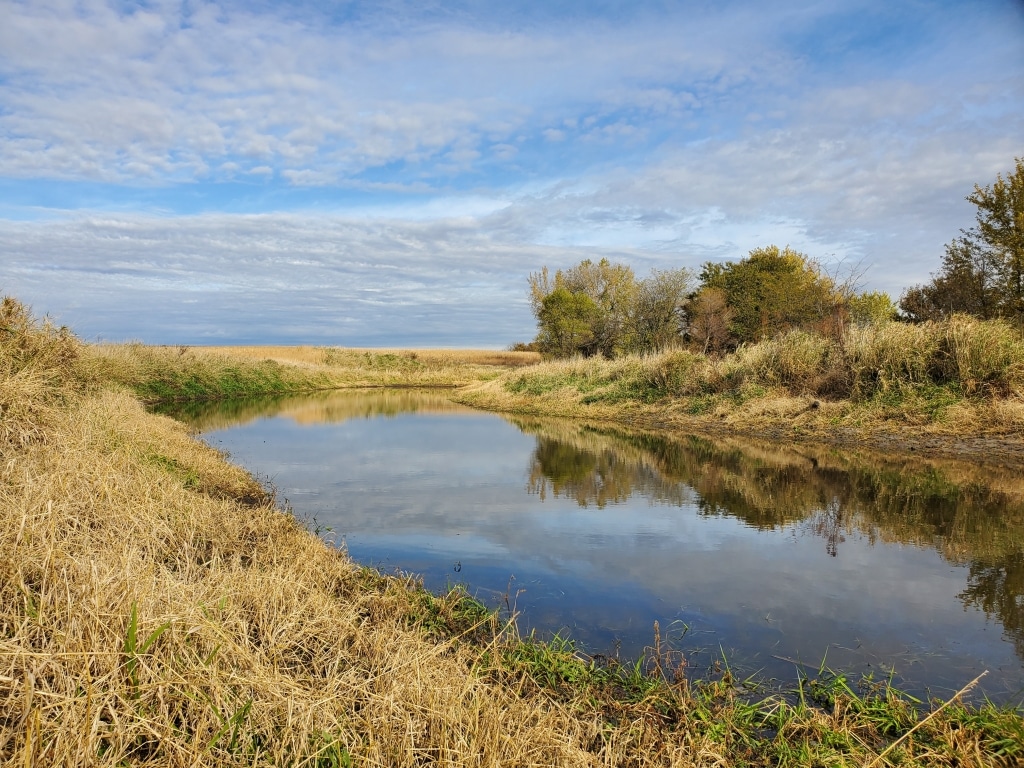
Action 4: Create and Restore Oxbows
Oxbows are old stream meanders that have naturally or artificially been cut off from the main stream or river channel. Oxbows store excess runoff, filter pollutants and sediment, and provide habitat for wildlife.
Action 5: Install Rain Water Harvest systems
Rainwater harvest systems capture runoff water from buildings both large and small and store it above or below ground to be used as non-potable water. Smaller systems collect runoff from the roofs of homes and can be later used on gardens. Large systems capture water from large industrial buildings and store it above or below ground in large tanks. Large volumes of captured water can be used to feed livestock, wash buildings, or for non-potable water inside the home.
To view potential Pond and WASCOB locations in each Subwatershed in the Upper Wapsi River Watershed click Here.
Measuring Success
- 18,000 acre-feet of distributed storage for the entire Upper Wapsi River Watershed
- 15,000 acre-feet of distributed storage for priority HUC12 watersheds
*Priority HUC 12s are upland subwatersheds above the community of Independence and excluding those in the Wapsi River Corridor (See map below)
Check out potential detention structure locations on the Upper Wapsipnicon Subwatersheds page
Strategy 4: RESTORE AND PROTECT STREAM AND RIVER CORRIDORS AND FLOODPLAINS
The Upper Wapsi River Watershed contains many areas where residents are at risk to flooding due to their proximity to stream and river corridors and floodplains. Protecting and restoring these areas can help maintain and improve the riparian area stream flow capacity.
Practices/Actions
Action 1: Restore Floodplain Connectivity
Restoring flood plain connectivity protects stream and river riparian areas. Flood plains can become unconnected by down cutting of a stream or river channel, flow alterations, physical barriers, or soil deposition in the floodplain. Disconnection of a flood plain causes higher peak flows associated with flooding and loss of wetland wildlife habitat. Floodplains provide diverse ecosystems, help trap and remove sediments and nutrients, and provide lateral flood storage which lowers the intensity of peak flows during flood events. Reconnection of the floodplain can be achieved by rerouting a stream or river to take on a new flood plain area, removing or modifying obstructions in the floodplain such as dams or road infrastructure, or modifying the stream bank to allow the stream or river to flood at a lower stream level. Permanently protecting properties along streams and rivers from urbanization through voluntary easements and public land purchase is another way to protect floodplain connectivity from disconnection.
USGS conducted a floodplain study in Green Island, Iowa on the importance of floodplain connectivity, for more information on this study click here.
Action 2: Plant Riparian Forest Buffers
Forest Buffers are forested strips planted along streams or rivers to reduce the amount of sediment, nutrients, and pesticides in surface runoff. They also provide habitat and help to reconnect the floodplain.
Action 3: Plant Filter Strips
Native grasses, or prairie strips planted along the stream or river banks to reduce the amount of sediment, nutrients, and pesticides in surface runoff. They also provide habitat and help to reconnect the floodplain.
Action 4: Install Stream Bank Stabilization
Deep rooted vegetation, multi species buffer, rip rap or other treatment used to stabilize and protect stream banks from erosion.
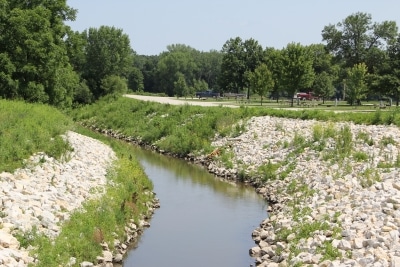
Action 5: Move vulnerable populations out of the flood plain area
Action 6: Create and preserve in-stream habitat
Measuring Success
- Protect near stream habitat and river floodplains through easements.
- Reduce impact to vulnerable populations and at-risk properties through buyouts, and development of affordable housing outside of the floodplain.
- Increase native vegetation planting adjacent to streams and rivers by 50%.
- Protect critical transportation infrastructure, with emphasis on emergency response routes.
- Relocate critical response services and facilities out of the floodplain
- Reduce CAFO/manure storage siting in floodplain areas
Priority Subwatersheds
Objective 3: Maximize the benefits of the scientific watershed analysis by encouraging location and practice prioritization that is outcome-oriented
Strategy 1: Support projects that target priority landscape positions.
Strategy 2: Provide research, content, and recommendations that encourage location and practice prioritization in local plans, projects, and programs.
Strategy 3: Assure the plan is a working document that meets the criteria outlined by the Iowa DNR, has local buy-in, provides expert guidance for the partners and provide regular updates and reports to that others may learn from our efforts.
Objective 4: Education and Outreach: Support projects and partners that work with the WMA and/or independently to increase watershed resident’s awareness and understanding of watershed function, flood prevention, and water quality degradation using, but not limited to, the following strategies
Strategy 1: Increase public awareness of watersheds and the power of working through the watershed approach to measurably reduce flooding and improve water quality.
Actions
Description 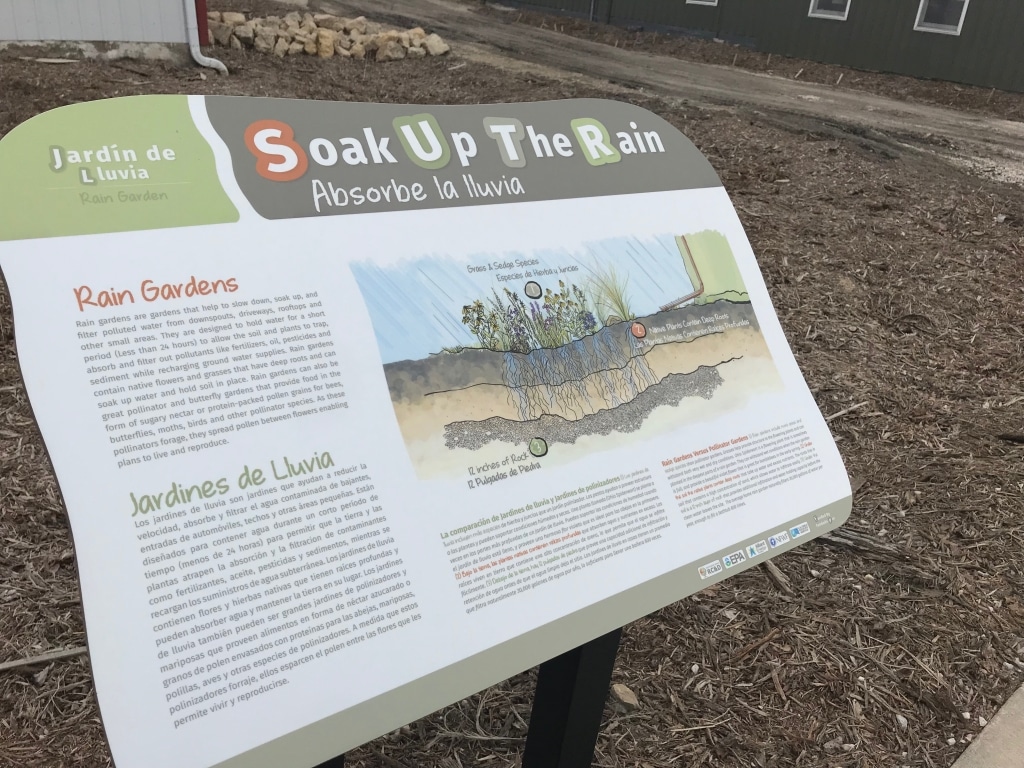
This project will develop, fabricate and install informational and educational kiosks in strategic urban and rural locations where projects have been implemented. The kiosks will explain the practices and or the concepts associated with watershed resiliency and other priority topics like soil health, cover crops, permeable pavers, stream restoration, etc.
Target Audience
General Public
Key Messengers
WMA Coordinator, Private and Public property owners including producers who have implemented practices on their farm or property, CCBs, RC&D, City Park and Rec
Potential Partners
Private Landowners including Producers, Cities, Businesses, SWCDs, ISU Extension, CCBs, RC&D, Community Betterment Groups, NRCS, IDALS
Methods/Vehicles to Maximize
Kiosks development fabrication, placement, and care. Public and private kiosk ownership and care. Stories in local media, Mini-events at BMPs with kiosks
Outcomes
Increased public awareness of, understanding of and support for watershed resiliency and implementation of specific BMPs on private and public properties
Evaluation Metrics
Number of BMPs implemented by private and public partners and watershed community members
Description
This activity is intended to introduce conservation issues through creative methods including music, dance, theater and visual art events that relate back to watersheds, stewardship of water, and stormwater management.
Target Audience
General Public, Children & Youth
Key Messengers
WMA Coordinator, Event Organizers, Communities, Schools, Artists: Singers, Songwriters, Composers, Dancers, Actors, Visual Artists, etc.
Potential Partners
Communities, Schools, Event Planners, Arts, Theater and Music Organizations and Businesses. K-12 School Art & Music Programs, College Art & Music Programs, Cultural Organizations. Local Businesses, RC&D, Event Organizers, Fair Boards
Methods/Vehicles to Maximize
Create a regional forum that fosters dialog about how water and art can enhance events, festivals, and fairs and shares activities and programs that can be used by interested parties and partners. Encourage planners to incorporate stormwater and watershed education into existing events, festivals and fairs.
Outcomes
Increased engagement related to water, increased public awareness of, understanding of and support for water resources
Evaluation Metrics
Number of forum users, number of activities and programs shared, number of activities and programs implemented, participation in activities and programs.
Description
This activity recognizes and coordinates local activities with world efforts to draw attention to the UWRW. It includes coordinating and promoting a week of events & media around watershed concepts during World Water Week and Earth Day Week. It could include a local media blitz, youth classes/activities, river cleanup outing, mini film festival, BMP tours, field day(s), fishing tournament, canoeing/kayaking races, pool party, nature hikes, art contest, block party, etc.
Target Audience
General Public, Children & Youth, Tourists/visitors
Key Messengers
WMA Coordinator, Community Leaders, Private Nonprofit Environmental Organizations, City Park and Recreation Departments, CCBs, SWCDs, ISU Extension
Potential Partners
Local Water-Related Business Owners such as Outfitters, Guides, etc., Chamber Offices, Tourism Offices, County Sanitarians, CCBs, Parks & Recreation, Hotel Motel Boards, SWCDs, ISU Extension
Methods/Vehicles to Maximize
Outreach to potential partners, coordination and promotion of multiple events within the UWR Watershed before and during the watershed week, follow-up social media and press releases
Outcomes
Increased awareness of UWR Watershed, water quality, flood prevention, resiliency concepts, and BMPs. Increased support for the implementation of urban and rural BMPs, supporting local policy, and public and private water management. Increased watershed awareness, responsibility, and stewardship.
Evaluation Metrics
Number of events held during the target week, participation in each activity/event, number of related media events and web post/likes, shares, traffic
Description 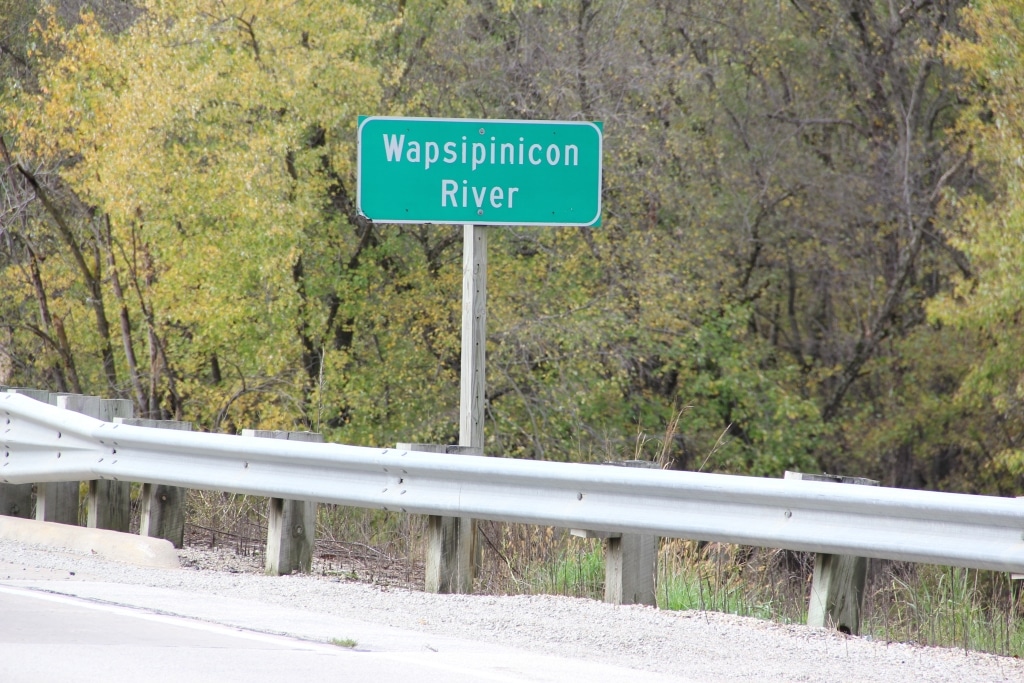
This activity will develop, fabricate and strategically place signage, including “Entering Upper Wapsi River Watershed” and “Exiting Upper Wapsi River Watershed” signs posted on highways and major roads at the watershed boundaries. It would include “Flows to” storm sewer stencils for use in UWR communities. (Such as Flows to Stream or Flows to Upper Wapsi River etc.)
Target Audience
General Public
Key Messengers
WMA Coordinator, SWCDs, County Farm Bureau Boards, Iowa DNR, City Managers, County Engineers and Roadside Managers
Potential Partners
Iowa DOT, CCBs, SWCDs, County Farm Bureau Boards, Iowa DNR, Local and Regional Private Foundations
Methods/Vehicles to Maximize
Sign and stencil design, fabrication and installation, partner site agreements, dedications, press releases
Outcomes
Increased awareness of watershed boundaries, water flow and water cycles.
Evaluation Metrics
Implementation sites and numbers, road traffic numbers (views of road signs)
Description
Northeast Iowa RC&D has already developed a website for the UWR WMA. This activity is ongoing management of the UWR website, which provides important, current, information on relevant topics including water monitoring data, publications, recreation information, resources, and WMA updates. It also includes development of social media associated with those same topics, which would reach a different audience.
Target Audience
General Public
Key Messengers
WMA Coordinator, RC&D, SWCDs, and other Contributing Private and Public Partners, Agencies and Organizations
Potential Partners
Local, Regional and State Partners, Organizations and Agencies
Methods/Vehicles to Maximize
Develop and continuously update content. Promote via social media, partner websites and press releases.
Outcomes
Watershed residents and visitors have continuous access to information about the watershed. Home for watershed information.
Evaluation Metrics
Unique visits
Description
This activity will develop a consistent UWR WMA “brand” so that all the education and informational materials have the same look, including printed materials, the WMAs website, mass media, informational and educational outreach materials developed by and for the UWR WMA. This will include layout and design of interpretive kiosks, watershed signs, billboards, brochures, postcards and any other educational materials developed by or for the UWR WMA.
Target Audience
Watershed residents, students, leaders, partners, and visitors
Key Messengers
WMA Coordinator, WMA member organizations, RC&D
Potential Partners
Producer organizations, Local and Regional Nonprofits, CCBs
Methods/Vehicles to Maximize
Input meetings with WMA Board or committee, selection of specific characteristics such as colors, fonts, style and other, draft brand review and final selection of branding characteristics, draft component design standards for specific types of education and outreach
Outcomes
A unified, consistent and cohesive education and outreach effort that is highly recognizable as being associated with the UWR WMA. Increased public awareness of, understanding of, and support for, watershed resiliency and future implementation of BMPs on private and public properties
Evaluation Metrics
Number of unique component design standards that are utilized and the overall number of times the design standards are applied
Description
This activity will develop and distribute promotional materials to attract the attention, engage and educate each of the WMA target audiences, including, but not limited to promotional materials such as brochures, banners, posters, displays, press releases billboards, and 1-page or postcard handouts and mailings.
Target Audience
General Public. Targeted audiences including Producers, Community Members, Landowners, Homeowners, Youth
Key Messengers
WMA Coordinator, CCB, SWCDs, RC&D, ISU Extension, City Stormwater Boards, County Departments and other Partners depending on target audiences
Potential Partners
SWCDs, CCBs, RC&D, NRCS, ISU Extension, IDALS Producer Agencies, Cities, Conservation Groups depending on target audiences
Methods/Vehicles to Maximize
Identify topics and focus areas for publications and specific target groups, design, develop and print/fabricate promotional materials, Identify partner funders and distribute
Outcomes
Promote watershed concepts and increase familiarity with watershed resiliency, water quality, flood prevention, conservation, BMPs, urban stormwater runoff practices, and other WMA priority issues
Evaluation Metrics
Number of materials distributed, traffic/views of billboards and banners
Description
This activity will develop a series of public workshops for residents who might be interested in learning more about building stormwater practices at home. The public workshops will cover simple-to-construct and manage best management practices for homeowners, such as how to construct rain barrels, install native plantings, rain gardens, or native turf, roof water collection, installation of grassed pavers for sidewalks, etc. It may be implemented in combination with city cost-share or grants secured for private BMP implementation.
Target Audience
General Public, Urban Homeowners.
Key Messengers
WMA Coordinator, WMA Cities, and City Storm Water Management Boards
Potential Partners
SWCDs, CCBs, Producer Groups, ISU Extension, Local and Regional Nonprofits, RC&D, Schools, Local Businesses and Colleges, Local Churches and Museums, Local Landscapers and Garden Shops
Methods/Vehicles to Maximize
Development of Workshop content and schedule, promotion and coordination with city and city stormwater management boards
Outcomes
Increase the visibility of low-cost, easy-to-maintain BMPs and general awareness of water conservation and management. Increase familiarity with urban BMPs.
Evaluation Metrics
Number of participants in workshops, number of practices implemented
Description
This project will recognize and work with producers and other watershed residents who have implemented urban and rural stormwater runoff practices. The participants and their practices will be professionally photographed so the WMA Board and partners have photos of local producers and practices to incorporate into UWR WMA promotional and educational materials that support the implementation of the WMA Plan. The participating producers will also be interviewed so they can be quoted in publications as well.
Target Audience
General Public and Producers
Key Messengers
WMA Coordinator, SWCDs, CCBs, ISU Extension, RC&D, Producer Groups
Potential Partners
ISU Extension, CCBs, RC&D, Producer Groups, SWCDs,
Methods/Vehicles to Maximize
Identify specific use of photographs and goals of specific outreach efforts and then identify appropriate producers and practices to meet the goals. Secure photographs, video and other visual media and incorporate into print and social media efforts.
Outcomes
Increased participation and implementation in flood reduction and water quality improvement practices. Increase pride in participation and peer encouragement
Evaluation Metrics
Number of participating producers and number of practices photographed, number of different media developed and number distributed
Description
This activity will include regular development and distribution of a paper and/or e-newsletters that will include updates to watershed residents about UWR WMA activities, programs, incentives, successes, how to participate, etc. It may include producer/resident and practice photographs and/or testimonies.
Target Audience
General Public and Producers
Key Messengers
WMA Coordinator, UWR WMA Board and Coordinator
Potential Partners
SWCDs, Cities, Counties, RC&D, Producers, Residents
Methods/Vehicles to Maximize
Develop and distribute newsletter. Identify target audience and develop USPS and/or e-mailing lists.
Outcomes
Increased participation and implementation in flood reduction and water quality improvement practices. Increase pride in participation and peer encouragement. Increased awareness of UWR WMA activities. Overall improved communications between WMA Board and Coordinator and watershed residents.
Evaluation Metrics
Number of newsletters distributed
Description
This activity will recognize UWR leadership by establishing a UWR WMA Producer Leader of the Year award, a UWR WMA Urban Leader of the Year award, and a UWR WMA Youth Leader of the Year award. These awards may be presented in an independent ceremony or in partnership with UWR SWCDs or others who already distribute awards annually.
Target Audience
General Public, Producers who are implementing practices that help improve watershed resiliency, City Residents who are implementing urban conservation practices or leading urban initiatives, Youth who are implementing conservation practices or leading urban/rural initiatives
Key Messengers
WMA Coordinator, SWCDs, Cities, WMA Partners
Potential Partners
Conservation Districts of Iowa, Producer Groups, Local businesses, IDALS, Local and Regional Nonprofits
Methods/Vehicles to Maximize
Develop nomination criteria, promote the program, develop a selection committee, identify sponsors, present award
Outcomes
Increased participation and implementation in flood reduction and water quality improvement practices. Increase pride in participation and peer encouragement
Evaluation Metrics
Number of nominations, press coverage
Description
The StormReady Program
“helps arm America’s communities with the communication and safety skills needed to save lives and property – before, during and after the event. Using a grassroots approach, it helps community leaders and emergency managers strengthen local safety programs”
Target Audience
General Public
Key Messengers
WMA Coordinator, UWR WMA Emergency Managers, Counties and Cities
Potential Partners
National Weather Service, UWR WMA Emergency Managers, Counties and Cities
Methods/Vehicles to Maximize
Encourage cities, counties, colleges, and other groups to become StormReady by 1) establishing a 24-hour warning point and emergency operations center 2) having more than one way to receive severe weather warnings and forecasts and to alert the public 3) creating a system that monitors weather conditions locally 4) promoting the importance of public readiness through community seminars 5) developing a formal hazardous weather plan, which includes training severe weather spotters and holding emergency exercises.
Outcomes
Increased emergency preparedness and understanding of flood and other emergency issues, increased awareness of emergency management
Evaluation Metrics
Number of StormReady entities in the UWRW
Description
There are local, state and federal laws that protect and/or promote watershed resiliency, such as the state law prohibiting mowing ditches adjacent to agricultural land. Educating watershed landowners about those laws will help increase overall watershed resiliency.
Target Audience
General Public, Producers and Urban Homeowners
Key Messengers
WMA Coordinator, cities, and counties
Potential Partners
Producer organizations, Local and Regional Nonprofits, CCBs
Methods/Vehicles to Maximize
1) Research, compile and share information about local, state and federal laws and regulations that direct land use and prohibit specific practices. 2) Identify and/or create information that can be distributed to the public 3) Work with partners to distribute information to the public.
Outcomes
Increased understanding and awareness of local, state and federal laws and why they are important to watershed resiliency
Evaluation Metrics
Number of new informational pieces available for publication and number of informational pieces distributed in the UWRW by type, audience, and volume
Description
The WMAs of Iowa rely on WMA Boards and stakeholders to education and inform their legislators about the need for WMA funding, and advocate for legislation that provides for a watershed approach to address significant flood and water quality protection.
Target Audience
Legislators
Key Messengers
WMA Coordinator, WMA Board members
Potential Partners
WMA stakeholders
Methods/Vehicles to Maximize
Develop a one page handout/white paper that provides clear concise information
Outcomes
Better informed WMA Board and stakeholders, stronger WMA, better informed legislators, increase funding for the WMAs in Iowa
Evaluation Metrics
Number of entities requesting white paper, number of legislators supporting legislative action related to WMA funding
Strategy 2: Encourage farmers and landowners to implement agricultural practices that conserve soil and improve water infiltration.
Description
This activity will implement field days that are educational events on local farms. Producers will voluntarily participate. The farms that are selected will have already implemented practices that the UWR WMA is promoting. Topics could range from cover crops, no-till and other soil conservation practices implemented on working land, to structural practices such as ponds and on-road structures.
Target Audience
Producers, Landowners
Key Messengers
WMA Coordinator, Producers, SWCDs, NRCS, IDALS, Producer Groups, CCBs, RC&D, ISU Extension,
Potential Partners
Producers, SWCDs, NRCS, IDALS, Producer Groups, ISU Extension, CCBs Local and Regional Nonprofits, County Engineers
Methods/Vehicles to Maximize
Coordination of event and speakers, invitations, press releases and promotion in local media and through partners, secure donations for meals, develop handouts, video and post event activities on social media
Outcomes
Increased dialog, familiarity, understanding of, and comfort with, watershed resiliency, agricultural BMPs and structures
Evaluation Metrics
Number of Producers and producers who attend events. Enrollment in related farm programs and/or number of Producers requesting follow-up assistance from farm agency staff.
Description
These activities will provide support for individual watershed residents who want to host landowners from a specific sub-watersheds, subwatershed area or social group, at the host’s house to talk about watershed resiliency, challenges within a defined land area and potential projects and solutions the group could implement in their rural or urban “neighborhood”. The support provided may include things like giving a presentation, providing maps and handouts, helping with development and mailing of the invitations, etc.
Target Audience
Neighborhood Associations and Groups, Producers and Landowners within a subwatershed or common land area, other public and private groups within a defined sub-watershed area or within a defined social sector or group
Key Messengers
WMA Coordinator, Watershed Residents, Producers, Neighborhood Associations and Social Groups
Potential Partners
SWCDs, NRCS, CCBs, Producer Groups, ISU Extension, RC&D, Youth Groups, Church Groups, Community and Social Groups
Methods/Vehicles to Maximize
Invitations and personal outreach and promotion, agendas, supporting maps and information, speakers and presentations as requested, technical expertise for follow-up projects
Outcomes
Empowered watershed residents who want to conduct farmer-to-farmer and neighbor-to-neighbor outreach that considers and addresses watershed resiliency concerns within a HUC 12 or within a defined land area or neighborhood. Increased public and private understanding, support for and implementation of BMPs and resiliency projects.
Evaluation Metrics
Number of meetings held, number of participants at meetings, and the number of projects implemented as a result of the meetings.
Description
This activity will result in the adoption of watershed concepts and water conservation practices in middle and high school agricultural education programs. It will also develop FFA experiences that focus on or include water conservation as a key component.
Target Audience
Children & Youth
Key Messengers
WMA Coordinator, School Teachers, Districts and Administrators including but not limited to Agricultural Educators, SWCDs, ISU Extension, CCBs Parents, Producer Groups
Potential Partners
SWCDs, FFA, ISU Extension, NRCS, Farm agencies, Producer Groups, RC&D, 4H
Methods/Vehicles to Maximize
Work with high school and middle school ag teachers who already cover the topics to do outreach to colleagues in other districts. Make curricula, lesson plans and activities available to interested teachers. Work with interested FFA and 4H chapters to increase interest in watersheds within those programs.
Outcomes
Foster a culture of stewardship and increase familiarity with agricultural BMPs and structures among youth who will grow into Producers, farm leaders, and community leaders.
Evaluation Metrics
Number of teachers including watersheds and water conservation practices & structures in their curricula, number of students exposed, number of 4H projects and FFA agricultural experiences
Description
This activity will develop 7-12 grade school field trips to UWR farms that have implemented practices that are promoted by the UWR WMA Board. The school farm field trips will include opportunities for student classes to interact with farmer-conservation leaders and see first-hand agricultural BMPs.
Target Audience
Children & Youth
Key Messengers
WMA Coordinator, Producers, SWCDs, NRCS, Teachers (esp. Ag teachers & FFA leaders) ISU Extension
Potential Partners
SWCDs, School districts, teachers, FFA, ISU Extension, SWCDs, NRCS, Farm agencies, Producer Agencies, 4H
Methods/Vehicles to Maximize
Work with high school and middle school ag teachers who already cover the topics to do outreach to colleagues in other districts, and with NRCS, and Farm and Producer Agencies to find Producers to host field days close to schools.
Outcomes
Foster a culture of stewardship and increase familiarity with agricultural BMPs and structures among youth who will grow into Producers, farm leaders, and community leaders. Recognize and honor the leadership of farmer-conservationists.
Evaluation Metrics
Number of field trips, number of different schools participating, number of students participating
Description
This activity will develop and distribute promotional materials to attract the attention, engage and educate each of the WMA target audiences, including, but not limited to promotional materials such as brochures, banners, posters, displays, press releases billboards, and 1-page or postcard handouts and mailings.
Target Audience
General Public. Targeted audiences including Producers, Community Members, Landowners, Homeowners, Youth
Key Messengers
WMA Coordinator, CCB, SWCDs, RC&D, ISU Extension, City Stormwater Boards, County Departments and other Partners depending on target audiences
Potential Partners
SWCDs, CCBs, RC&D, NRCS, ISU Extension, IDALS Producer Agencies, Cities, Conservation Groups depending on target audiences
Methods/Vehicles to Maximize
Identify topics and focus areas for publications and specific target groups, design, develop and print/fabricate promotional materials, Identify partner funders and distribute
Outcomes
Promote watershed concepts and increase familiarity with watershed resiliency, water quality, flood prevention, conservation, BMPs, urban stormwater runoff practices, and other WMA priority issues
Evaluation Metrics
Number of materials distributed, traffic/views of billboards and banners
Description
This project will recognize and work with producers and other watershed residents who have implemented urban and rural stormwater runoff practices. The participants and their practices will be professionally photographed so the WMA Board and partners have photos of local producers and practices to incorporate into UWR WMA promotional and educational materials that support the implementation of the WMA Plan. The participating producers will also be interviewed so they can be quoted in publications as well.
Target Audience
General Public and Producers
Key Messengers
WMA Coordinator, SWCDs, CCBs, ISU Extension, RC&D, Producer Groups
Potential Partners
ISU Extension, CCBs, RC&D, Producer Groups, SWCDs,
Methods/Vehicles to Maximize
Identify specific use of photographs and goals of specific outreach efforts and then identify appropriate producers and practices to meet the goals. Secure photographs, video and other visual media and incorporate into print and social media efforts.
Outcomes
Increased participation and implementation in flood reduction and water quality improvement practices. Increase pride in participation and peer encouragement
Evaluation Metrics
Number of participating producers and number of practices photographed, number of different media developed and number distributed
Description
This activity will include regular development and distribution of a paper and/or e-newsletters that will include updates to watershed residents about UWR WMA activities, programs, incentives, successes, how to participate, etc. It may include producer/resident and practice photographs and/or testimonies.
Target Audience
General Public and Producers
Key Messengers
WMA Coordinator, UWR WMA Board and Coordinator
Potential Partners
SWCDs, Cities, Counties, RC&D, Producers, Residents
Methods/Vehicles to Maximize
Develop and distribute newsletter. Identify target audience and develop USPS and/or e-mailing lists.
Outcomes
Increased participation and implementation in flood reduction and water quality improvement practices. Increase pride in participation and peer encouragement. Increased awareness of UWR WMA activities. Overall improved communications between WMA Board and Coordinator and watershed residents.
Evaluation Metrics
Number of newsletters distributed
Description
There are local, state and federal laws that protect and/or promote watershed resiliency, such as the state law prohibiting mowing ditches adjacent to agricultural land. Educating watershed landowners about those laws will help increase overall watershed resiliency.
Target Audience
General Public, Producers and Urban Homeowners
Key Messengers
WMA Coordinator, cities, and counties
Potential Partners
Producer organizations, Local and Regional Nonprofits, CCBs
Methods/Vehicles to Maximize
1) Research, compile and share information about local, state and federal laws and regulations that direct land use and prohibit specific practices. 2) Identify and/or create information that can be distributed to the public 3) Work with partners to distribute information to the public.
Outcomes
Increased understanding and awareness of local, state and federal laws and why they are important to watershed resiliency
Evaluation Metrics
Number of new informational pieces available for publication and number of informational pieces distributed in the UWRW by type, audience, and volume
Strategy 3: Promote greater understanding of best practices for urban stormwater management, and develop champions for watershed protection among community leaders.
Description
This activity includes development and implementation of guided tours of UWR implemented projects and/or practices especially the practices implemented through the Iowa Watershed Approach Project. It also includes tours of urban conservation practices in UWR communities, tours of the NE Iowa RC&D’s Urban Stormwater Demonstration Site, and other urban and rural sites residents, leaders, and visitors can go to see first-hand examples of the urban and rural practices being promoted by the UWR WMA Board. It may include bus tours and will include a guide who explains the practices to the participants.
Target Audience
Community and county leaders. City officials and city staff. Community-level partners, including staff, members and boards of Master Gardeners, Downtown Betterment, Chamber of Commerce, Park and Recreation, school boards and administrations, businesses and any other community members that might implement urban stormwater practices.
Key Messengers
WMA Coordinator, NRCS, SWCDs, CCBs, ISU Extension, RC&D, Cities with existing stormwater BMPs
Potential Partners
County Engineers, ISWEP, USFWS, NFWF, Alliant Energy, Local Schools, Iowa Flood Center, IIHR, EPA, Local Businesses, Chamber of Commerce, Downtown Betterment, Master Gardeners, 4-H, Eagle Scouts, Local Churches and other partners interested in investing in Watershed Resiliency
Methods/Vehicles to Maximize
Event planning, scheduling, site summaries, invitations to, educational events/tours, publicity, secure partners, donations for meals, speakers and transportation as needed, coordination with property owners, post event activities on social media
Outcomes
Increased dialog, familiarity, understanding of, and comfort with, watershed resiliency, and urban and rural BMPs
Evaluation Metrics
The number of tours, participants, entities (such as cities, counties, and organizations) attending/represented.
Description
This activity is intended to bring interested watershed residents together to hear about the UWR WMA’s efforts and plan over a meal. A host would give an Informational talk during a meal (breakfast, lunch or supper). Topics may include urban stormwater management, the importance of protecting vulnerable populations, on-road structures, rural BMPs, local water resources, potential local policy, WMA project updates, and other education & programming.
Target Audience
General Public, Community Leaders, Decision Makers, Ag Lenders, Chamber of Commerce
Key Messengers
WMA Coordinator, SWCDs and other WMA members and partners
Potential Partners
Chamber of Commerce, Community Betterment Groups, Ag Lender Groups, Local Banks, ISWEP, IDALS, NRCS, Producer Groups, ISU Extension, CCBs
Methods/Vehicles to Maximize
Develop, coordinate, promote and present a series of topics, press releases, direct invitations to target audience. Identify, secure and coordinate sponsors, space, meal, and speakers
Outcomes
Increased familiarity and comfort with the WMA, urban and rural BMPs, watershed resiliency, and the return on investment for implementation of practices. Increased understanding and appreciation for the resource
Evaluation Metrics
Number of events, number of partner, sponsorships, and attendance
Description 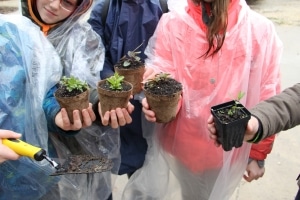
This activity will implement K-12 School field trips to sites that support conservation, including but not limited to the RC&D’s new Urban Stormwater Demonstration Site and other watershed resiliency focused sites as well as recycling, habitat restoraiton, ag tours and other guided tours that demonstrate multiple BMPs and provide interactive lessons.
Target Audience
Children & Youth
Key Messengers
WMA Coordinator, School Teachers, Districts and Administrators, CCBs, SWCDs, RC&D
Potential Partners
School Districts, Teachers and Administrators, CCBs, SWCDs, RC&D, Area Education Agencies, Local and Regional Nonprofits
Methods/Vehicles to Maximize
Development of off-school grounds field trip options that welcome school groups, have interpretation, programming and hands-on learning opportunities, recruit sponsors and partners to help pay for school travel expenses, equipment, and engagement. Assist with development of site amenities when needed.
Outcomes
Foster a culture of stewardship and environmental leadership among youth who will grow into community members and leaders. Create a sense of connection and relevance that fosters life-long responsibility and engagement. Secondary effect of parents learning through conversation with kids, take-home materials and projects in the community.
Evaluation Metrics
Number of quality field trip sites available, number of field trips taken, number of different schools participating, number of students participating
Description
This activity will develop and distribute promotional materials to attract the attention, engage and educate each of the WMA target audiences, including, but not limited to promotional materials such as brochures, banners, posters, displays, press releases billboards, and 1-page or postcard handouts and mailings.
Target Audience
General Public. Targeted audiences including Producers, Community Members, Landowners, Homeowners, Youth
Key Messengers
WMA Coordinator, CCB, SWCDs, RC&D, ISU Extension, City Stormwater Boards, County Departments and other Partners depending on target audiences
Potential Partners
SWCDs, CCBs, RC&D, NRCS, ISU Extension, IDALS Producer Agencies, Cities, Conservation Groups depending on target audiences
Methods/Vehicles to Maximize
Identify topics and focus areas for publications and specific target groups, design, develop and print/fabricate promotional materials, Identify partner funders and distribute
Outcomes
Promote watershed concepts and increase familiarity with watershed resiliency, water quality, flood prevention, conservation, BMPs, urban stormwater runoff practices, and other WMA priority issues
Evaluation Metrics
Number of materials distributed, traffic/views of billboards and banners
Description
This activity will develop a series of public workshops for residents who might be interested in learning more about building stormwater practices at home. The public workshops will cover simple-to-construct and manage best management practices for homeowners, such as how to construct rain barrels, install native plantings, rain gardens, or native turf, roof water collection, installation of grassed pavers for sidewalks, etc. It may be implemented in combination with city cost-share or grants secured for private BMP implementation.
Target Audience
General Public, Urban Homeowners.
Key Messengers
WMA Coordinator, WMA Cities, and City Storm Water Management Boards
Potential Partners
SWCDs, CCBs, Producer Groups, ISU Extension, Local and Regional Nonprofits, RC&D, Schools, Local Businesses and Colleges, Local Churches and Museums, Local Landscapers and Garden Shops
Methods/Vehicles to Maximize
Development of Workshop content and schedule, promotion and coordination with city and city stormwater management boards
Outcomes
Increase the visibility of low-cost, easy-to-maintain BMPs and general awareness of water conservation and management. Increase familiarity with urban BMPs.
Evaluation Metrics
Number of participants in workshops, number of practices implemented
Description
This project will recognize and work with producers and other watershed residents who have implemented urban and rural stormwater runoff practices. The participants and their practices will be professionally photographed so the WMA Board and partners have photos of local producers and practices to incorporate into UWR WMA promotional and educational materials that support the implementation of the WMA Plan. The participating producers will also be interviewed so they can be quoted in publications as well.
Target Audience
General Public and Producers
Key Messengers
WMA Coordinator, SWCDs, CCBs, ISU Extension, RC&D, Producer Groups
Potential Partners
ISU Extension, CCBs, RC&D, Producer Groups, SWCDs,
Methods/Vehicles to Maximize
Identify specific use of photographs and goals of specific outreach efforts and then identify appropriate producers and practices to meet the goals. Secure photographs, video and other visual media and incorporate into print and social media efforts.
Outcomes
Increased participation and implementation in flood reduction and water quality improvement practices. Increase pride in participation and peer encouragement
Evaluation Metrics
Number of participating producers and number of practices photographed, the number of different media developed and number distributed
Description
This activity will include regular development and distribution of a paper and/or e-newsletters that will include updates to watershed residents about UWR WMA activities, programs, incentives, successes, how to participate, etc. It may include producer/resident and practice photographs and/or testimonies.
Target Audience
General Public and Producers
Key Messengers
WMA Coordinator, UWR WMA Board and Coordinator
Potential Partners
SWCDs, Cities, Counties, RC&D, Producers, Residents
Methods/Vehicles to Maximize
Develop and distribute newsletter. Identify target audience and develop USPS and/or e-mailing lists.
Outcomes
Increased participation and implementation in flood reduction and water quality improvement practices. Increase pride in participation and peer encouragement. Increased awareness of UWR WMA activities. Overall improved communications between WMA Board and Coordinator and watershed residents.
Evaluation Metrics
Number of newsletters distributed
Description
There are local, state and federal laws that protect and/or promote watershed resiliency, such as the state law prohibiting mowing ditches adjacent to agricultural land. Educating watershed landowners about those laws will help increase overall watershed resiliency.
Target Audience
General Public, Producers and Urban Homeowners
Key Messengers
WMA Coordinator, cities, and counties
Potential Partners
Producer organizations, Local and Regional Nonprofits, CCBs
Methods/Vehicles to Maximize
1) Research, compile and share information about local, state and federal laws and regulations that direct land use and prohibit specific practices. 2) Identify and/or create information that can be distributed to the public 3) Work with partners to distribute information to the public.
Outcomes
Increased understanding and awareness of local, state and federal laws and why they are important to watershed resiliency
Evaluation Metrics
Number of new informational pieces available for publication and number of informational pieces distributed in the UWRW by type, audience, and volume
Strategy 4: Engage students and youth, the next generation of community leaders, in watershed education and improvement projects.
Description 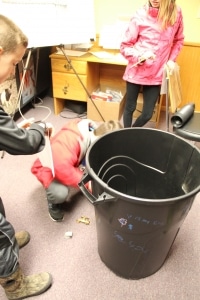
This activity is organized events for K-12 children and youth in informal education settings. It could include hands-on projects, like building rain barrels, or outdoor recreation activities like canoeing clean-ups, playing with a stream table during a public library youth program time, learning about trout and how to fish through a Park and Recreation program, or creative water activities at a fair or festival.
Target Audience
Children & Youth
Key Messengers
WMA Coordinator, SWCDs, CCBs, School Clubs 4H and Scout Groups, Daycare Providers, Libraries, Fair, Festival and Event Organizers, RC&D
Potential Partners
Teachers, School Administrators, Education Professionals, ISU Extension K-12 program staff, CCBs, Libraries, Youth Organizations, Camps, RC&D, Faith-based Youth Groups
Methods/Vehicles to Maximize
Identify existing programs, festivals, events and activities that draw youth or would like to draw youth. Develop and provide program activity kits that empower partners and foster fun learning about watershed resiliency, water quality, best management practices, and other related topics. Promote use of the activity kits.
Outcomes
Foster a culture of stewardship and environmental leadership among youth who will grow into community members and leaders. A secondary effect of parents learning through conversation with kids, take-home materials and projects in the community
Evaluation Metrics
Number of events that refer to and/or use program activity kits to inform the implementation of youth water conservation programming, participation in events.
Description
This activity is intended to introduce conservation issues through creative methods including music, dance, theater and visual art events that relate back to watersheds, stewardship of water, and stormwater management.
Target Audience
General Public, Children & Youth
Key Messengers
WMA Coordinator, Event Organizers, Communities, Schools, Artists: Singers, Songwriters, Composers, Dancers, Actors, Visual Artists, etc.
Potential Partners
Communities, Schools, Event Planners, Arts, Theater and Music Organizations and Businesses. K-12 School Art & Music Programs, College Art & Music Programs, Cultural Organizations. Local Businesses, RC&D, Event Organizers, Fair Boards
Methods/Vehicles to Maximize
Create a regional forum that fosters dialog about how water and art can enhance events, festivals, and fairs and shares activities and programs that can be used by interested parties and partners. Encourage planners to incorporate stormwater and watershed education into existing events, festivals and fairs.
Outcomes
Increased engagement related to water, increased public awareness of, understanding of and support for water resources
Evaluation Metrics
Number of forum users, number of activities and programs shared, number of activities and programs implemented, participation in activities and programs.
Description
This activity recognizes and coordinates local activities with world efforts to draw attention to the UWRW. It includes coordinating and promoting a week of events & media around watershed concepts during World Water Week and Earth Day Week. It could include a local media blitz, youth classes/activities, river cleanup outing, mini film festival, BMP tours, field day(s), fishing tournament, canoeing/kayaking races, pool party, nature hikes, art contest, block party, etc.
Target Audience
General Public, Children & Youth, Tourists/visitors
Key Messengers
WMA Coordinator, Community Leaders, Private Nonprofit Environmental Organizations, City Park and Recreation Departments, CCBs, SWCDs, ISU Extension
Potential Partners
Local Water-Related Business Owners such as Outfitters, Guides, etc., Chamber Offices, Tourism Offices, County Sanitarians, CCBs, Parks & Recreation, Hotel Motel Boards, SWCDs, ISU Extension
Methods/Vehicles to Maximize
Outreach to potential partners, coordination and promotion of multiple events within the UWR Watershed before and during the watershed week, follow-up social media and press releases
Outcomes
Increased awareness of UWR Watershed, water quality, flood prevention, resiliency concepts, and BMPs. Increased support for the implementation of urban and rural BMPs, supporting local policy, and public and private water management. Increased watershed awareness, responsibility, and stewardship.
Evaluation Metrics
Number of events held during the target week, participation in each activity/event, number of related media events and web post/likes, shares, traffic
Description
This activity will provide support and assistance to teachers and schools who want to implement a Water Rocks (ISU) Program. Water Rocks is a statewide youth water education campaign that can lead to long term, multi-generational learning. It challenges and inspires a greater appreciation of water resources. The local school has to raise funds or secure a sponsor to participate.
Target Audience
Children & Youth
Key Messengers
WMA Coordinator, School Teachers, Districts and Administrators, CCBs, SWCDs, RC&D
Potential Partners
ISU Extension and Outreach, Iowa DNR, Iowa Water Center, Iowa Learning Farms, USDA National Inst. For Food and Agriculture, EPA
Methods/Vehicles to Maximize
Promotion of the Water Rocks Program to UWR Watershed Schools, Assistance with fundraising for implementation and promotion
Outcomes
Increase participation in Water Rock program. Long-term multi-generational learning about water resources,
Evaluation Metrics
Water Rocks Program participation within the watershed
Description
This activity will help increase the availability of and quality of curricula and hands-on activities that are easily accessible for K-12 teachers to use in their classrooms. It would include curricula related to watersheds, watershed resiliency, water quality, water conservation, in-stream and near stream habitat, urban and rural BMPs, stormwater management, and other related concepts. It will also increase support for and opportunities for students to actively participate in related service projects through schools (development of rain gardens, rain barrel building workshops, etc.) in the watershed.
Target Audience
Children & Youth
Key Messengers
WMA Coordinator, School Teachers, Districts and Administrators, SWCDs, RC&D, ISU Extension
Potential Partners
School Districts, Teachers and Administrators, SWCDs, ISU Extension, RC&D, Area Education Agencies, Local and Regional Nonprofits
Methods/Vehicles to Maximize
Development of an online database of tools and resources for teachers including but not limited to high-quality curricula, hand-on activities, and links. Development and implementation of RC&D Stormwater Education curricula and program
Outcomes
Foster a culture of stewardship and environmental leadership among youth who will grow into community members and leaders. A secondary effect of parents learning through conversation with kids, take-home materials and projects in the community.
Evaluation Metrics
The number of teachers that add watersheds to their curricula and/or expand watershed units. Number of students participating in watershed units, implementation of BMPs by students, number of service projects by students
Description
This activity will develop and implement a fun children/youth program that requires students to complete a series of educational requirements and tasks that qualify them as “Watershed Guardians”. Once the tasks are completed, the students will receive a reward for their effort, such as a backpack pull in the shape of a fish.
Target Audience
Children & Youth
Key Messengers
WMA Coordinator, RC&D
Potential Partners
School Districts, Teachers, SWCDs, CCB, Park and Rec, Cities
Methods/Vehicles to Maximize
Development of River Guardian Program guidelines, recruit partner organizations and sponsors, create rewards/recognition for achievement
Outcomes
Individual pride in learning about and implementation of stormwater practices. Peer encouragement to participate in River Guardian activities
Evaluation Metrics
Number of River Guardians
Description
This activity will implement K-12 School field trips to sites that support conservation, including but not limited to the RC&D’s new Urban Stormwater Demonstration Site and other watershed resiliency focused sites as well as recycling, habitat restoration, ag tours and other guided tours that demonstrate multiple BMPs and provide interactive lessons.
Target Audience
Children & Youth
Key Messengers
WMA Coordinator, School Teachers, Districts and Administrators, CCBs, SWCDs, RC&D
Potential Partners
School Districts, Teachers and Administrators, CCBs, SWCDs, RC&D, Area Education Agencies, Local and Regional Nonprofits
Methods/Vehicles to Maximize
Development of off-school grounds field trip options that welcome school groups, have interpretation, programming, and hands-on learning opportunities, recruit sponsors and partners to help pay for school travel expenses, equipment, and engagement. Assist with the development of site amenities when needed.
Outcomes
Foster a culture of stewardship and environmental leadership among youth who will grow into community members and leaders. Create a sense of connection and relevance that fosters life-long responsibility and engagement. The secondary effect of parents learning through conversation with kids, take-home materials and projects in the community.
Evaluation Metrics
Number of quality field trip sites available, number of field trips taken, number of different schools participating, number of students participating
Description
This activity will result in the adoption of watershed concepts and water conservation practices in middle and high school agricultural education programs. It will also develop FFA experiences that focus on or include water conservation as a key component.
Target Audience
Children & Youth
Key Messengers
WMA Coordinator, School Teachers, Districts and Administrators including but not limited to Agricultural Educators, SWCDs, ISU Extension, CCBs Parents, Producer Groups
Potential Partners
SWCDs, FFA, ISU Extension, NRCS, Farm agencies, Producer Groups, RC&D, 4H
Methods/Vehicles to Maximize
Work with high school and middle school ag teachers who already cover the topics to do outreach to colleagues in other districts. Make curricula, lesson plans and activities available to interested teachers. Work with interested FFA and 4H chapters to increase interest in watersheds within those programs.
Outcomes
Foster a culture of stewardship and increase familiarity with agricultural BMPs and structures among youth who will grow into Producers, farm leaders, and community leaders.
Evaluation Metrics
Number of teachers including watersheds and water conservation practices & structures in their curricula, number of students exposed, number of 4H projects and FFA agricultural experiences
Description
This activity will develop 7-12 grade school field trips to UWR farms that have implemented practices that are promoted by the UWR WMA Board. The school farm field trips will include opportunities for student classes to interact with farmer-conservation leaders and see first-hand agricultural BMPs.
Target Audience
Children & Youth
Key Messengers
WMA Coordinator, Producers, SWCDs, NRCS, Teachers (esp. Ag teachers & FFA leaders) ISU Extension
Potential Partners
SWCDs, School districts, teachers, FFA, ISU Extension, SWCDs, NRCS, Farm agencies, Producer Agencies, 4H,
Methods/Vehicles to Maximize
Work with high school and middle school ag teachers who already cover the topics to do outreach to colleagues in other districts, and with NRCS, and Farm and Producer Agencies to find Producers to host field days close to schools
Outcomes
Foster a culture of stewardship and increase familiarity with agricultural BMPs and structures among youth who will grow into Producers, farm leaders, and community leaders. Recognize and honor the leadership of farmer-conservationists.
Evaluation Metrics
Number of field trips, number of different schools participating, number of students participating
Description
This activity will develop and distribute promotional materials to attract the attention, engage and educate each of the WMA target audiences, including, but not limited to promotional materials such as brochures, banners, posters, displays, press releases billboards, and 1-page or postcard handouts and mailings.
Target Audience
General Public. Targeted audiences including Producers, Community Members, Landowners, Homeowners, Youth
Key Messengers
WMA Coordinator, CCB, SWCDs, RC&D, ISU Extension, City Stormwater Boards, County Departments and other Partners depending on target audiences
Potential Partners
SWCDs, CCBs, RC&D, NRCS, ISU Extension, IDALS Producer Agencies, Cities, Conservation Groups depending on target audiences
Methods/Vehicles to Maximize
Identify topics and focus areas for publications and specific target groups, design, develop and print/fabricate promotional materials, Identify partner funders and distribute
Outcomes
Promote watershed concepts and increase familiarity with watershed resiliency, water quality, flood prevention, conservation, BMPs, urban stormwater runoff practices, and other WMA priority issues
Evaluation Metrics
Number of materials distributed, traffic/views of billboards and banners
Description
This project will recognize and work with producers and other watershed residents who have implemented urban and rural stormwater runoff practices. The participants and their practices will be professionally photographed so the WMA Board and partners have photos of local producers and practices to incorporate into UWR WMA promotional and educational materials that support the implementation of the WMA Plan. The participating producers will also be interviewed so they can be quoted in publications as well.
Target Audience
General Public and Producers
Key Messengers
WMA Coordinator, SWCDs, CCBs, ISU Extension, RC&D, Producer Groups
Potential Partners
ISU Extension, CCBs, RC&D, Producer Groups, SWCDs,
Methods/Vehicles to Maximize
Identify specific use of photographs and goals of specific outreach efforts and then identify appropriate producers and practices to meet the goals. Secure photographs, video and other visual media and incorporate into print and social media efforts.
Outcomes
Increased participation and implementation in flood reduction and water quality improvement practices. Increase pride in participation and peer encouragement
Evaluation Metrics
The number of participating producers, the number of practices photographed, the number of different media developed, and the number distributed
Description
This activity will include regular development and distribution of a paper and/or e-newsletters that will include updates to watershed residents about UWR WMA activities, programs, incentives, successes, how to participate, etc. It may include producer/resident and practice photographs and/or testimonies.
Target Audience
General Public and Producers
Key Messengers
WMA Coordinator, UWR WMA Board and Coordinator
Potential Partners
SWCDs, Cities, Counties, RC&D, Producers, Residents
Methods/Vehicles to Maximize
Develop and distribute newsletter. Identify target audience and develop USPS and/or e-mailing lists.
Outcomes
Increased participation and implementation in flood reduction and water quality improvement practices. Increase pride in participation and peer encouragement. Increased awareness of UWR WMA activities. Overall improved communications between WMA Board and Coordinator and watershed residents.
Evaluation Metrics
Number of newsletters distributed
Objective 5: Build the UWR WMA’s Long-term Capacity to Operate and Implement Projects
Strategy 1: Support UWR WMA participation in WMAs of Iowa meetings and events.
- Key Messenger: WMA Coordinator and WMA Board Officer
Strategy 2: Support UWR WMA participation in WMAs of Iowa Board and WMAs of Iowa committees.
- Key Messenger: WMA Coordinator and WMA Board Officer
Strategy 3: Periodically develop, implement and analyze UWR WMA Watershed Resident Surveys to better understand public perception and attitudes, assess the UWR WMA’s impact on the watershed and to inform future WMA and partner work.
- Key Messenger: WMA Coordinator and WMA Board Officer, WMA Member Counties and Cities.
Strategy 4: Set aside time annually for the UWR WMA Board to plan for and discuss future WMA activities, funding, and sustainability.
- Key Messenger: WMA Coordinator and WMA Board Officer, WMA Board Committee
Strategy 5: Educate legislators about the need for WMA funding, and advocate for legislation that provides for a watershed approach to address significant flood and water quality protection.
- Key Messenger: WMA Coordinator and WMA Board Officer, WMA Board Committee, WMA’s of Iowa, WMA Member SWCD’s, Counties, and Cities
Strategy 6: Identify and pursue grants, partnerships, and other means for sustaining funding for flood reduction projects in the UWR Watershed.
- Key Messenger: WMA Coordinator and WMA Board Officer, WMA Board Committee, WMA Member SWCD’s, Counties, and Cities
Objective 6: Evaluate the Watershed Authority’s effectiveness and use the evaluation to inform future UWR WMA work.
Strategy 1: Develop measurable, defined objectives for overall WMA effectiveness that can and are reviewed annually.
- Key Messengers: WMA Board Committees, WMA Coordinator, WMA Board Officer
Strategy 2: Evaluate the overall participation and accomplishments of the WMA partners on an annual basis, based on the agreed-upon measurable, defined objectives.
- Key Messengers: WMA Board Committees, WMA Coordinator, WMA Board Officer
Strategy 3: Incorporate and review Evaluation Parameters for each Objective and Strategy included in the UWR WMA plan.
- Key Messengers: WMA Board Committees, WMA Coordinator, WMA Board Officer
Strategy 4: Evaluate the effectiveness of the paid coordinator, and the UWR WMA’s need for and employment structure of UWR WMA staff.
- Key Messengers: WMA Board Committees, WMA Coordinator
Strategy 5: Develop and distribute an annual update to the UWR WMA Plan that includes a summary of all evaluations, updated measures for objectives and strategies based on those evaluations, and overall recommendations for UWR WMA efforts in the next year.
- Key Messengers: WMA Board Committees, WMA Coordinator, WMA Member SWCD’s
